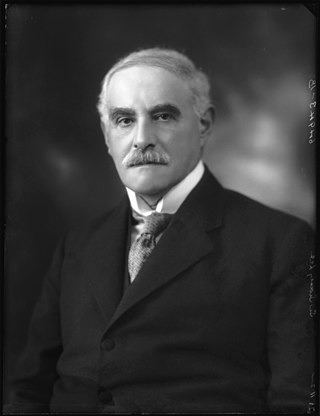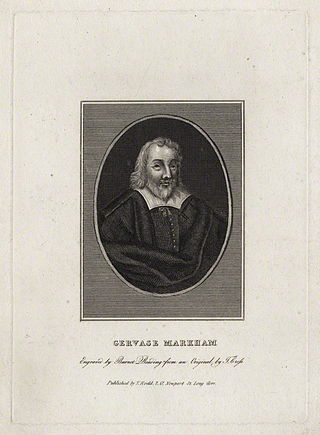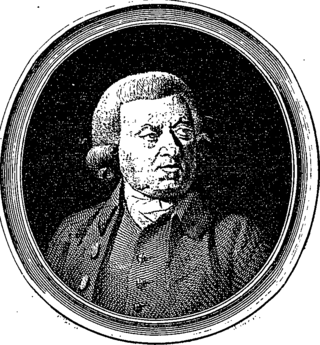Related Research Articles
Nathan Bailey, was an English philologist and lexicographer. He was the author of several dictionaries, including his Universal Etymological Dictionary, which appeared in some 30 editions between 1721 and 1802. Bailey's Dictionarium Britannicum was the primary resource mined by Samuel Johnson for his Dictionary of the English Language (1755).

Sir Sidney Lee was an English biographer, writer, and critic.

Thomas Tickell was a minor English poet and man of letters.

GervaseMarkham was an English poet and writer. He was best known for his work The English Huswife, Containing the Inward and Outward Virtues Which Ought to Be in a Complete Woman, first published in London in 1615.

William Shenstone was an English poet and one of the earliest practitioners of landscape gardening through the development of his estate, The Leasowes.

Sir John Hill was an English composer, actor, author and botanist. He contributed to contemporary periodicals and engaged in literary battles with poets, playwrights and scientists. He is remembered for his illustrated botanical compendium The Vegetable System, one of the first works to use the nomenclature of Carl Linnaeus. In recognition of his efforts, he was created a knight of the Order of Vasa in 1774 by Gustav III of Sweden and thereafter called himself Sir John Hill.
John Camden Hotten was an English bibliophile and publisher. He is best known for his clandestine publishing of numerous erotic and pornographic titles.

Thomas Johnson was an English botanist, and a royalist colonel in the English Civil War. He has been called the "father of British field botany".

John Abercrombie was a Scottish horticulturist important to renovating garden techniques. He is noted for the book Every Man His Own Gardener (1767), which he co-wrote with Thomas Mawe.
The Gardener's Labyrinth or The Gardeners Labyrinth was an early popular book about gardening. It was written by Thomas Hill, using the pseudonym Didymus Mountain, with Henry Dethick and published in 1577.
Cuthbert Shaw (1738/9–1771) was an English poet and actor.
Leonard Mascall was an English author and translator.

George Nicholson, was an English botanist and horticulturist, amongst 60 awarded the Victoria Medal of Honour by the Royal Horticultural Society in 1897 for their contributions to horticulture. He is noted for having edited "The Illustrated Dictionary of Gardening", produced as an eight-part alphabetical series between 1884 and 1888 with a supplement, and published by L. Upcott Gill of London. It was also published in New York in 1889 by The American Agriculturist in 4 Volumes.

Erasmus Middleton (1739–1805) was an English clergyman, author and editor.
Richard Rolt was an English writer, also known as a poet and librettist.
Thomas Speght was an English schoolmaster and editor of Geoffrey Chaucer.
John Russell Smith (1810–1894), known as Russell Smith, was an English bookseller and bibliographer. He is best known for his "Library of Old Authors" reprint series.

Thomas Rivers (1798–1877) was an English nurseryman, known for developing new varieties of roses and fruits.
John Hildrop was an English cleric, known as a religious writer and essayist. Hildrop authored one of the earliest works on animal rights.
George Mason was an English writer and book collector.
References
- ↑ Johnson, Francis R. (1944). "Thomas Hill: An Elizabethan Huxley". Huntingdon Library Quarterly. 7: 332, 338.
- ↑ Gordon Goodwin (1891). "Hill, Thomas (fl.1590)". In Dictionary of National Biography. 26. London. p. 422.
- 1 2 Bibliography of works on gardening, reprinted from the second edition of "A history of gardening in England" (1897), auth. Cecil, Evelyn, Mrs, London
- 1 2 Willes, Margaret (2011). The Making of the English Gardener. Yale University Press. p. 56.
- ↑ Julie Coleman (May 2001), The Gardener's Labyrinth, University of Glasgow
- ↑ Johnson 1944, p. 339.
- ↑ The Gardener's Labyrinth, By (author) Thomas Hill, Volume editor Richard Mabey, Oxford University Press, 1988
- ↑ Hyll, Thomas (1571). "The contemplation of mankinde".
{{cite web}}: CS1 maint: numeric names: authors list (link)